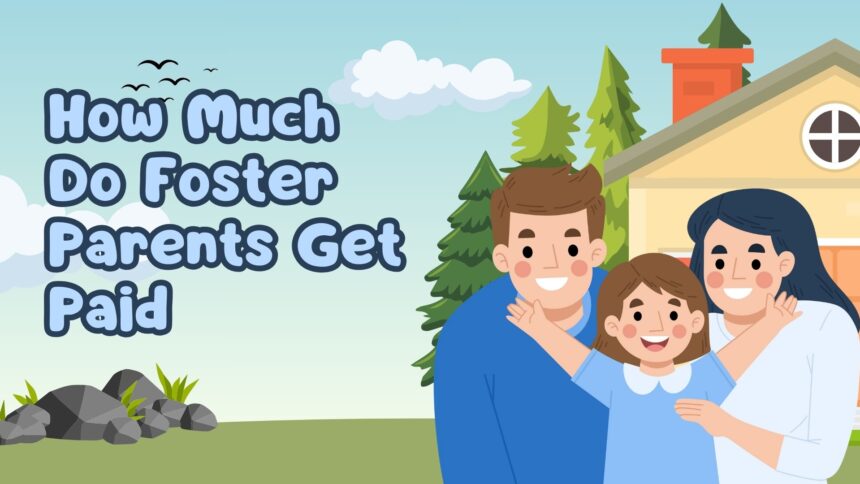Foster parents do not receive what we think of in a normal sense as pay or salary for services. Instead, they get a stipend every month to cover some of the expenses associated with taking care of the children who are placed in their homes. For families considering foster parenting, it is important that they know more about these payments
What Foster Parents Receive
Foster care payments are reimbursement stipends, not salaries. Monthly payments serve to offset some of the basic expenses that are entailed in me implementing my civil mandate, etc.

- Food and nutrition
- Clothing and personal items
- Transportation costs
- School supplies and educational needs
- Basic healthcare co-pays
- Recreation and activities
How Payment Amounts Are Determined
Foster care stipend amounts vary significantly based on several key factors:
Child’s Age
Older children typically require higher stipends due to increased costs for food, clothing, and activities. Payment rates are usually structured in age tiers:
- Infant/toddler rates (ages 0-4)
- School-age rates (ages 5-12)
- Teenage rates (ages 13-18)
Child’s Special Needs
Children requiring specialized care receive additional funding through:
- Higher level-of-care rates
- Therapeutic foster care supplements
- Medical needs allowances
- Behavioral support funding
State and Local Variations
Each state sets its own payment rates, creating significant differences across the country.
Foster Care Payment Ranges by State (2025)
Payment amounts vary dramatically by location. Current state stipend ranges include:

Higher-paying states:
- California: $1,000-$2,600+ per month depending on age and needs
- Nebraska: $597-$1,047 per month
- Washington: $446-$627 per month based on age
Moderate-paying states:
- Alabama: $462-$501 per month
- Idaho: $329-$487 per month
Lower-paying states:
- Illinois: $26-$511 per month (significant variation based on placement type)
These amounts reflect basic care rates and may be supplemented with additional funding for children with special needs.
Additional Financial Support
Beyond monthly stipends, foster parents may receive:
Healthcare Coverage
- Medicaid: All foster children are eligible for comprehensive Medicaid coverage including medical, dental, vision, and mental health services
- Therapy Services: Coverage for counseling, occupational therapy, and specialized treatments
Childcare Assistance
- CCDF Program: Child Care Development Fund assistance for working foster parents
- School-related Support: Transportation and educational activity funding
Special Allowances
- Clothing Allowances: Seasonal clothing budgets, especially for initial placements
- Birthday and Holiday Funds: Special occasion allowances
- Educational Grants: Support for extracurricular activities, tutoring, or college preparation
- Respite Care: Temporary care funding to give foster parents breaks
Important Financial Considerations
Stipends Don’t Cover All Costs
Foster care stipends are designed to help with basic needs but may not cover:
- All food costs for growing teenagers
- Extracurricular activities and sports
- Higher utility bills
- Wear and tear on vehicles and homes
- Emergency expenses
Tax Implications
- Foster care stipends are generally not considered taxable income
- Payments are reimbursements, not wages
- Keep detailed records of all foster care-related expenses
Financial Requirements for Foster Parents
Most states require foster parents to demonstrate:
- Stable income independent of foster care payments
- Ability to cover household expenses without relying on stipends
- Emergency savings for unexpected child-related costs
Specialized Care Higher Payments
Therapeutic Foster Care
Children with significant emotional, behavioral, or medical needs may qualify for enhanced rates:
- Level 2 Care: Moderate needs – typically 25-50% higher than basic rates
- Level 3 Care: Intensive needs – can be 75-100% higher than basic rates
- Medical Foster Care: For children with complex medical conditions – highest payment tier
Respite and Emergency Care
- Emergency Placement: Often pays premium daily rates
- Respite Care: Temporary care payments, usually daily rates
- Short-term Placements: May have different rate structures
How Payments Are Processed
Monthly Payment Schedule
- Most states pay monthly stipends
- Payments typically arrive by the 15th of each month
- Prorated payments for partial months
- Direct deposit is standard in most states
Documentation Requirements
- Monthly reporting may be required
- Receipt keeping for certain expenses
- Medical appointment documentation
- Educational progress reports
Regional Payment Variations
Cost of Living Adjustments
States with higher costs of living generally offer higher stipend rates. Urban areas within states may have different rates than rural regions.
Annual Rate Increases
Many states implement annual cost-of-living adjustments, such as California’s 4.32% increase effective July 2024.
Future Changes and Trends
Payment System Reforms
Several states are modernizing their foster care payment systems:
- California is implementing major changes to foster care payments starting in 2026, with proposals to direct more money to high-needs children.
- Focus on outcome-based payments
- Increased support for kinship care
Advocacy for Higher Rates
Foster care advocates continue pushing for:
- Regular cost-of-living adjustments
- Better coverage of actual child-rearing costs
- Additional support for foster parent expenses
Bottom Line
Foster care stipends are not income, they are reimbursements to offset the costs associated with caring for children in need. This is because stipend amounts vary widely according to the state they are paid in and the needs of the child, and foster parents need to be financially stable enough to care for the children regardless of how much a stipend pays.
Fostering should only be followed if it is better for specific children and their families than more long-term solutions that identity permanency as a realistic goal; not because it makes economic sense to move kids around from one place to another just so we can keep them safe in the short term.
To donate or receive your area’s specific payment information, contact your local child welfare agency or a licensed foster care organization since rates and policies are subject to change from place to place.


